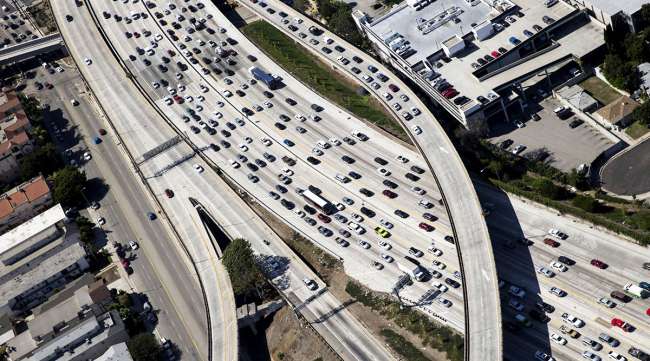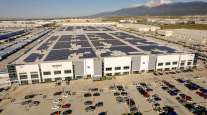Trump’s Bid to Ease Auto Rules Would Hike Fuel Costs, Study Says

[Stay on top of transportation news: Get TTNews in your inbox.]
President Donald Trump’s plan to freeze U.S. vehicle efficiency standards would hike costs for motorists without doing anything to boost highway safety, according to an analysis by Consumer Reports that undermines the administration’s chief talking points in favor of the move.
The analysis comes as the White House reviews a final drafted plan for easing vehicle emissions and fuel economy standards, despite escalating pressure from some automakers and California to change course. The administration last year proposed capping fuel economy and tailpipe carbon dioxide emission standards at 2020 levels, instead of allowing them to rise annually as under existing regulations. The plan also calls for stripping California of its authority to regulate tailpipe greenhouse gas emissions.
The Transportation Department and Environmental Protection Agency argued their proposal would pare the cost of new automobiles and save as many as 1,000 lives annually by spurring motorists to trade in older models for newer, safer vehicles. The agencies also estimated the proposal would spare motorists some $2,340 in average new vehicle ownership costs. And they baked those forecasts into the name of the measure, dubbed the “Safer Affordable Fuel Efficient Vehicles” proposal.
But the Consumer Reports analysis counters the administration’s assertions that the plan would reduce traffic fatalities and boost highway safety. Consumer Reports argues instead that “the effects on safety from changes in fuel-economy standards are quite small and likely not statistically different from zero.”
That assessment dovetails with concerns raised quietly by EPA officials last year, as the administration prepared to unveil its plan. At the time, EPA regulators repeatedly questioned the underlying safety assumptions, at least once warning that the proposed standards would actually be “detrimental to safety.”
“He doesn't talk much about it in public, but one of Donald Trump's goals is to allow cars to be dirtier.”
California is leading the way on clean car emissions despite federal efforts to destroy our environment. https://t.co/Gqapf0SVC8 — Office of the Governor of California (@CAgovernor) July 26, 2019
The Consumer Reports analysis also paints a starkly different picture of potential costs for drivers, by highlighting the importance of fuel savings — rather than vehicle purchase prices — to motorists. Because most new vehicle buyers finance their purchases, they can start feeling the benefits of lower fuel costs right away, the organization says. And those fuel savings, in turn, drive higher consumer spending and more purchases of newer, safer vehicles, said the group, the advocacy arm of the consumer product research and testing not-for-profit that publishes Consumer Reports magazine.
“The rollback is like a gas tax because it increases drivers’ fuel costs,” said Consumer Reports, likening the proposed policy change to an additional 63 cents per gallon of gasoline for owners of model year 2026 vehicles. Over the life of that 2026 automobile, the administration’s preferred policy choice would translate to an additional $3,300, the analysis found. The owners of trucks and sport utility vehicles would be especially hard hit, according to the assessment.
“The facts don’t back this rule’s Orwellian name,” said David Friedman, vice president of advocacy for Consumer Reports. “The evidence shows that lowering fuel economy and emissions standards won’t do anything to improve traffic safety, but it will leave Americans stuck with the bill.”
Supporters of the administration’s proposal say the existing auto standards now targeted for changes were established in a different time, driven by assumptions about higher gas prices and climbing enthusiasm for hybrid vehicles. Instead, they say, the surging popularity of sport-utility vehicles and other trucks has made the mileage requirements harder to satisfy, while raising the cost of new vehicles and putting them out of reach for many households.
The administration has acknowledged a link between its plan and higher fuel consumption, saying its proposal could cause the U.S. to use an extra 500,000 barrels of oil daily.
Carmakers have pleaded with administration officials to restart negotiations with California over the standards, arguing the changes could lead to years of uncertainty and a split market, with federal mileage requirements governing most states and California-backed rules applying in states that account for more than a third of U.S. auto sales.
Four major automakers last month said they had reached a compromise with California to voluntarily boost fuel efficiency, a move seen aimed at pressuring the administration to shift course.




